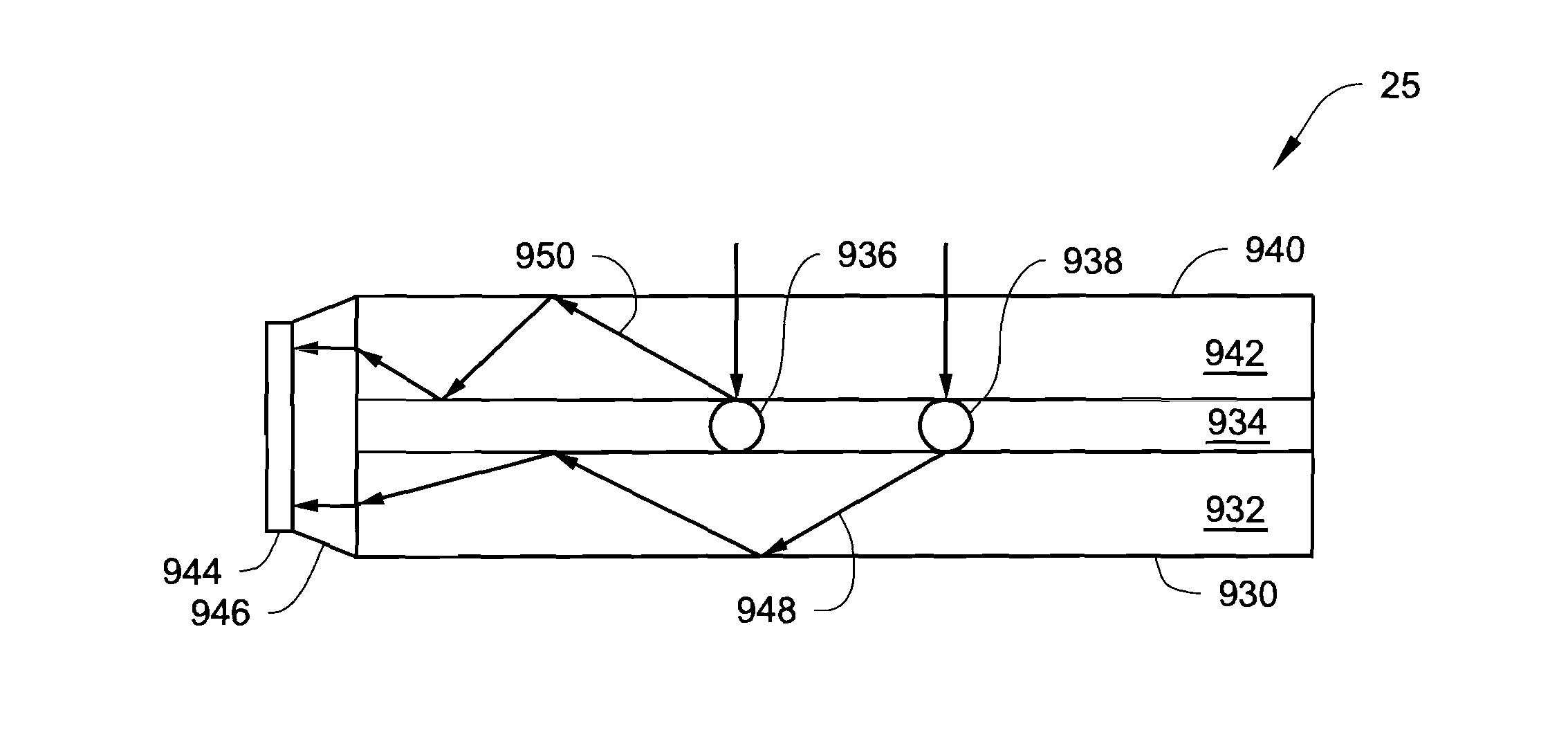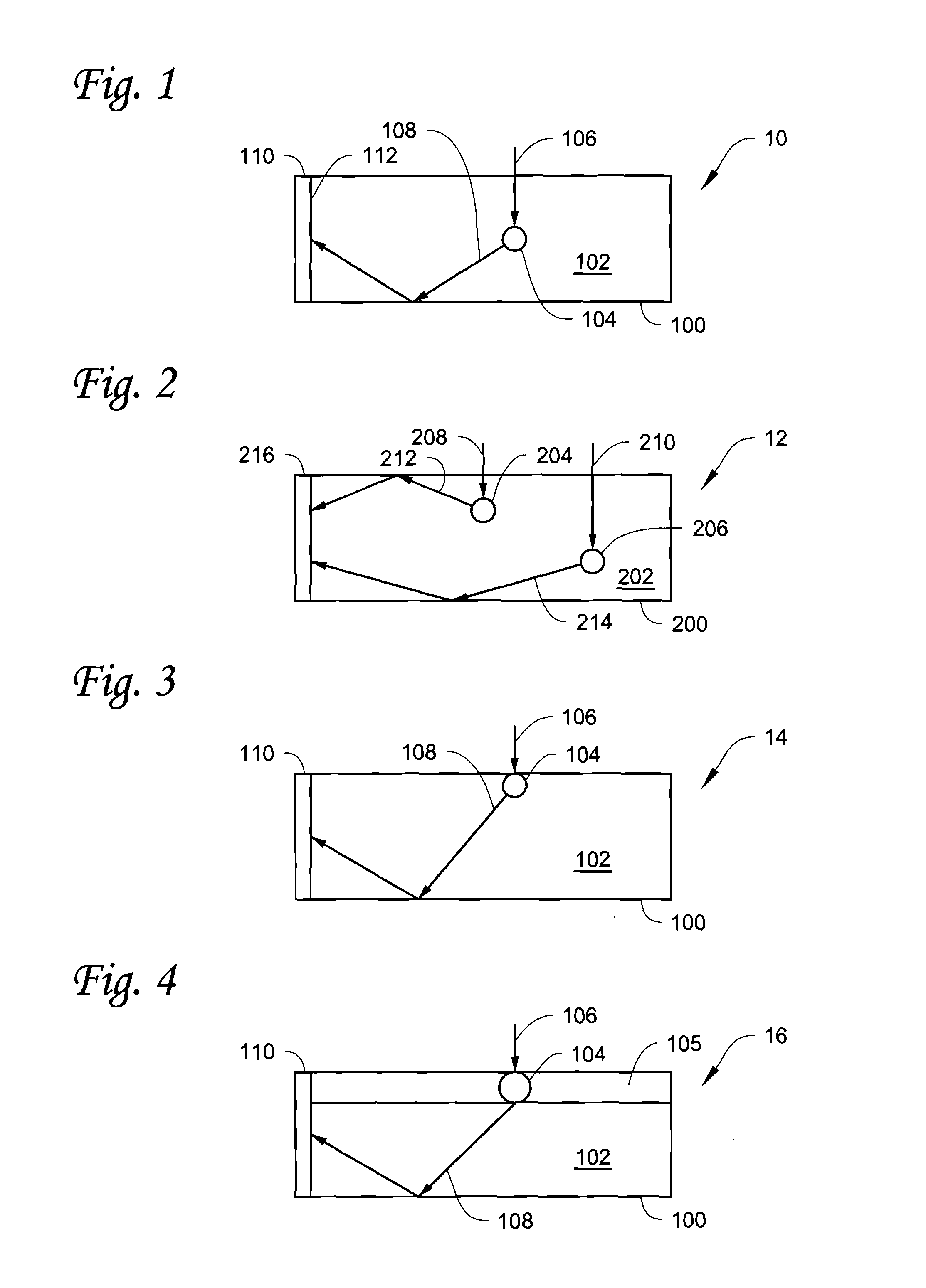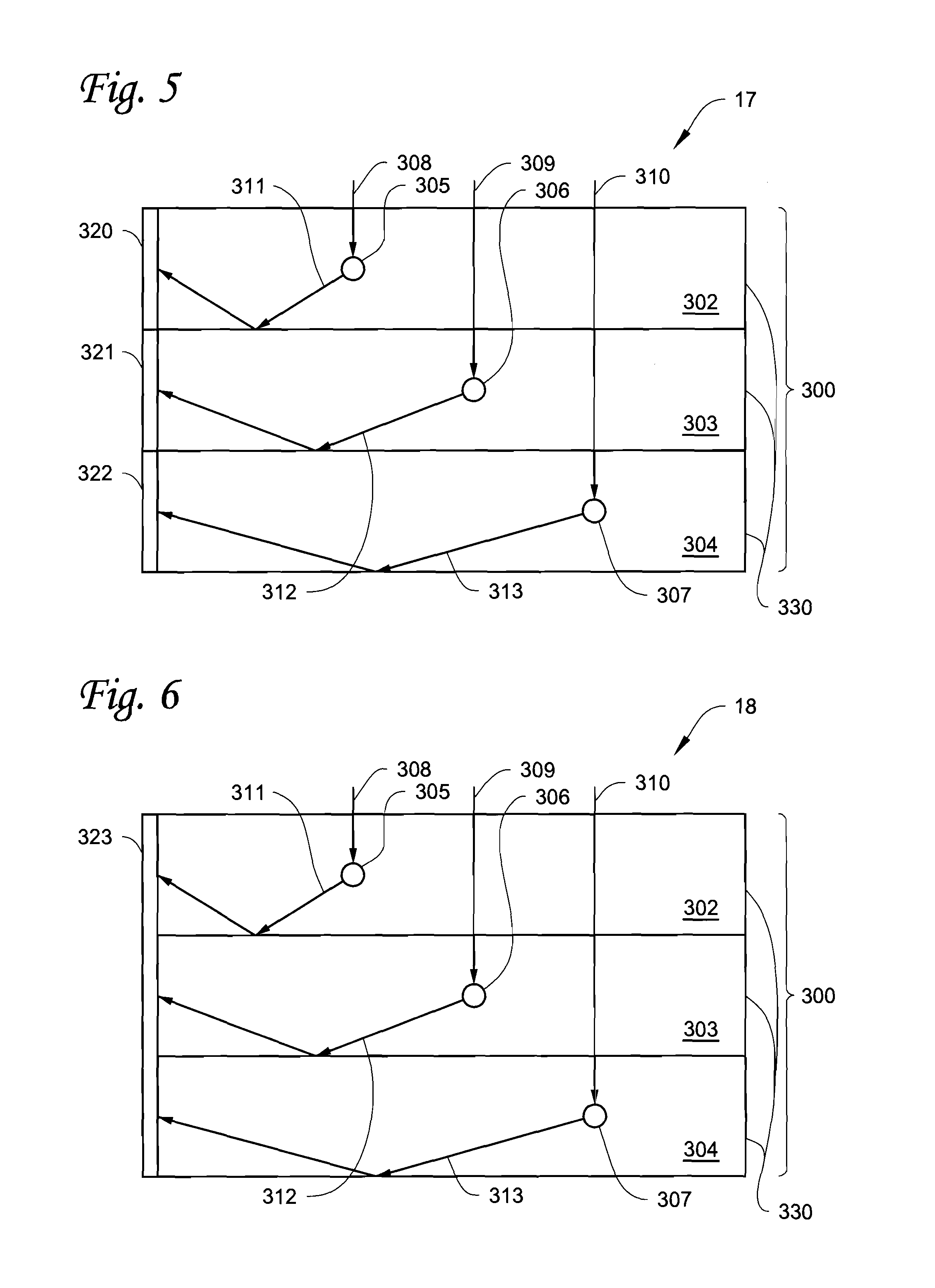Device and method for converting incident radiation into electrical energy using an upconversion photoluminescent solar concentrator
a technology of photoluminescent solar concentrator and incident radiation, which is applied in the direction of luminescent dosimeter, optical radiation measurement, fluorescence/phosphorescence, etc., can solve the problems of large solar spectrum that cannot be used by conventional concentrators for generating electricity, and requires inefficient solar tracking methods, etc., to achieve the probability of reabsorption of emitted photons and higher energy
- Summary
- Abstract
- Description
- Claims
- Application Information
AI Technical Summary
Benefits of technology
Problems solved by technology
Method used
Image
Examples
Embodiment Construction
[0060]A method for converting incident radiation into electrical energy includes absorbing the incident radiation with an upconversion chromophore, emitting an emitted photon from the upconversion chromophore, wherein the emitted photon has higher energy than the incident radiation, directing the emitted photon from the upconversion chromophore to a photovoltaic device using a waveguide, and the photovoltaic device absorbing the emitted photon and converting to electrical energy. The method may also include absorbing a second incident radiation with a second upconversion chromophore, wherein the second incident radiation has higher energy than the incident radiation, emitting a second emitted photon from the second upconversion chromophore, wherein the second emitted photon has higher energy than the second incident radiation, directing the second emitted photon from the second upconversion chromophore to the photovoltaic device using a second waveguide, and the photovoltaic device ...
PUM
 Login to View More
Login to View More Abstract
Description
Claims
Application Information
 Login to View More
Login to View More - R&D
- Intellectual Property
- Life Sciences
- Materials
- Tech Scout
- Unparalleled Data Quality
- Higher Quality Content
- 60% Fewer Hallucinations
Browse by: Latest US Patents, China's latest patents, Technical Efficacy Thesaurus, Application Domain, Technology Topic, Popular Technical Reports.
© 2025 PatSnap. All rights reserved.Legal|Privacy policy|Modern Slavery Act Transparency Statement|Sitemap|About US| Contact US: help@patsnap.com



